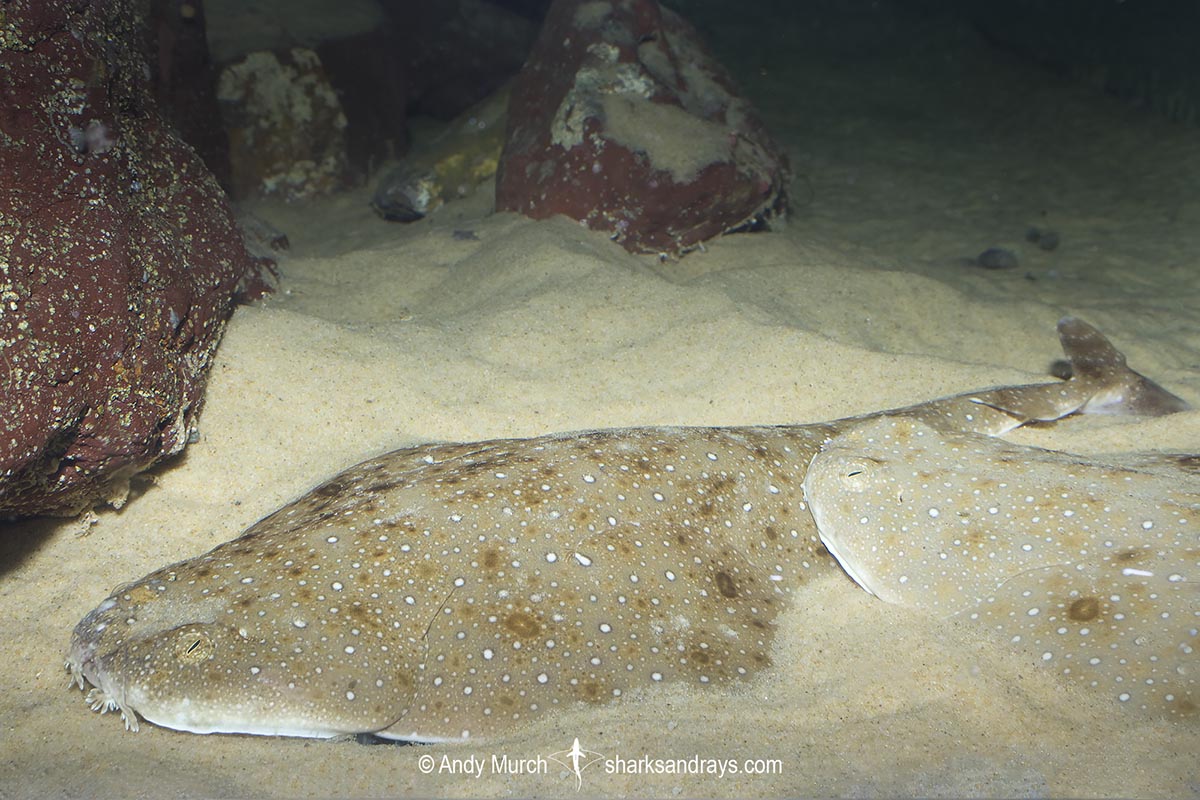Common names
Eastern Angelshark, Eastern Australian Angel Shark.
Binomial
Squatina albipunctata.
Synonyms
None.
Identification
A small angelshark species with a relatively small head and heavily fringed nasal barbells. Head margin is inline with pectoral fin margins. Elongated spiracles wider than eye width. Concave forehead between eyes. Strong orbital thorns (enlarged denticles behind eyes) but no pre-dorsal rows of thorns present on back.
Dorsal coloration tan or brown with numerous scattered, dark edged, small white spots and small dark spots. Two larger brown spots (ocelli) on each pectoral fin. Ventrum pale.
Size
Maximum size 130cm. Size at birth 27-30cm.

Conservation Status
VULNERABLE

Habitat
Tropical and temperate sandy substrate often close to monumentation such as rocky reefs. Continental shelf and upper continental slope. From 35-415m.
Distribution
An eastern Australian endemic. Found from Cairns in northern Queensland southward to Lakes Entrance, Victoria.
Reproduction
Like other squatinids, the eastern angelshark is an aplacental viviparous species. Up to 20 pups per litter (Michael 2001).
Diet
Feeds on small fishes. The eastern angelshark is an ambush predator that lays on the substrate partially covered by sand. When a fish swims within range, the angelshark explodes upwards from its concealment, mouth agape and clamps down on its prey.
Behavior
The eastern angelshark remains motionless (waiting for prey to swim near its mouth) for long periods each day.
Reaction to divers
Easy to approach. Remains motionless, relying on camouflage. Will bolt if molested.
Diving logistics
The eastern angelshark generally inhabits depths beyond recreational scuba limits so it is rarely encountered by divers, but it does occasionally enter shallow water. Confirmed sightings have occurred at Cabbage Tree Bay (Manly), and at a few other sites in NSW.
The best way to search for angel sharks is to swim along the edge of the reef, about 2m above the sand, in rocky or kelpy areas where the sharks have sand they can hide under and access to a good supply of fishes.
Although the shark will likely be buried under a fine covering of sand, their outline is often somewhat visible. Even if the outline of the angelshark is obscured, they always keep their eyes and spiracles exposed. After a few encounters, you should be able to pick out the signs of a shark’s presence more easily.
Once you have located a shark, with slow, non-aggressive movements, it is usually possible to settle down next to it and gently fan away most of the sand to get a better look. This does not distress the animal or significantly waste its energy because one or two pectoral fin flaps will completely cover it again. Be careful not to wave your hand too close to its mouth to avoid a demonstration of its incredibly fast bite reflex!
